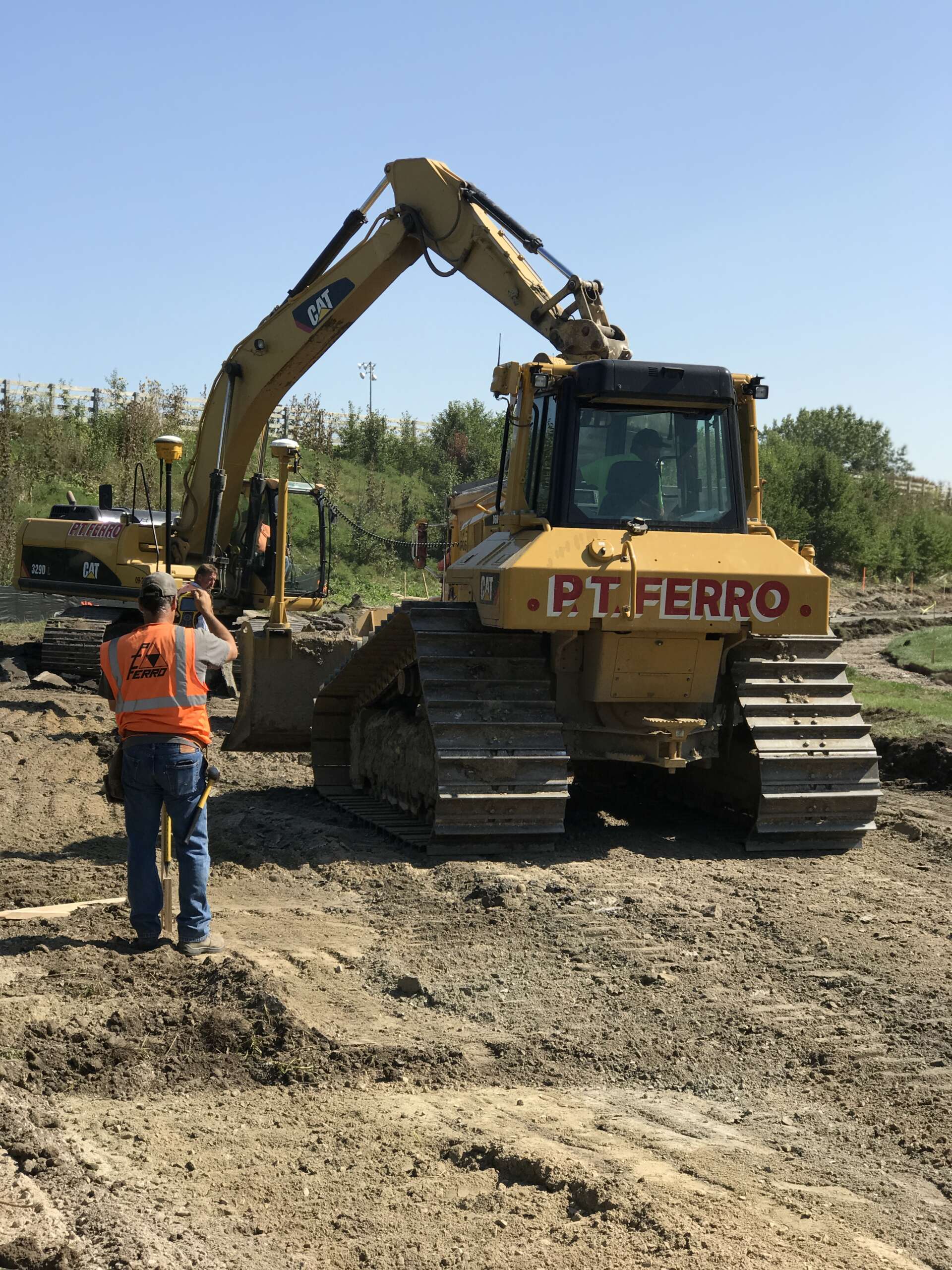Have you ever driven on a newly paved road and wondered how it came to be? The transformation from a simple idea sketched on paper to a fully functioning roadway is a marvel of modern engineering, teamwork, and expertise.
At PT Ferro Construction, we’re proud to be part of this journey. Today, we’re pulling back the curtain to show you what it takes to turn a blueprint into blacktop.
Step 1: Planning, Design, and Funding
Every road starts with a vision. Whether it’s a local municipality aiming to improve traffic flow or a state agency designing a major highway, the process begins by identifying the need. Engineers and urban planners assess the area, traffic patterns, and environmental considerations. These assessments are transformed into detailed blueprints, outlining everything from road dimensions to drainage systems.
However, designing a road is only part of the equation—funding is just as critical. Road construction projects are primarily funded through a combination of local, state, and federal sources.
In Illinois, a significant portion of road funding comes from the Motor Fuel Tax (MFT), a tax on gasoline and diesel fuel. (1)
Local property taxes, vehicle registration fees, and state infrastructure programs also contribute to the financial resources required for road improvements. This funding ensures that communities can invest in safer, more efficient infrastructure while keeping projects on schedule.

Step 2: Permits, Regulatory Approvals, and Compliance
Construction can’t begin until all necessary permits and approvals are secured. This phase involves extensive collaboration with local governments, utility companies, and environmental agencies to ensure the project meets all safety standards and regulatory requirements.
Key considerations during this stage include compliance with environmental protection laws, stormwater management regulations, and the protection of existing utilities and natural resources.
Regulatory reviews ensure the project minimizes environmental impact, protects public health, and maintains transparency in how public funds are spent. This process can involve multiple agencies at the local, state, and federal levels, depending on the project scope.

Step 3: Excavation and Grading
Before a road can take shape, the ground must be prepared. Our crews clear the area of vegetation and debris, excavate the soil, and level the land. Proper grading is crucial for establishing a solid foundation and ensuring effective drainage. Without it, water infiltration could compromise the road’s longevity.
Step 4: Subbase Installation
The subbase is the unsung hero of road construction. Made from compacted aggregate materials, this critical layer supports the asphalt above it and evenly distributes vehicle loads. It’s designed to withstand immense weight while maintaining long-term stability.
Step 5: Paving
This is where the blacktop magic happens! Hot mix asphalt is delivered to the site and carefully spread using a paving machine. Rollers then compact the asphalt to create a smooth, durable surface. Precision is essential at this stage to avoid imperfections that could affect the road’s quality and performance.
Step 6: Finishing Touches
No road is complete without its finishing touches. This phase includes painting lane markings, installing signage, and placing safety barriers. These final details transform the construction site into a safe, functional roadway ready for drivers.
Step 7: Ongoing Maintenance
Even after the ribbon-cutting ceremony, the work isn’t done. Roads require regular maintenance to remain safe and functional. From crack sealing to resurfacing, our team is always ready to ensure the roads we build stand the test of time.
Behind the Scenes: Teamwork and Expertise
Building roads is more than just a job—it’s a mission to connect communities and keep the world moving. Each project involves countless hours of collaboration, problem-solving, and hard work from our dedicated team.
So, the next time you drive on a freshly paved road, remember the journey it took to get there. It’s a testament to innovation, precision, and the power of teamwork.



